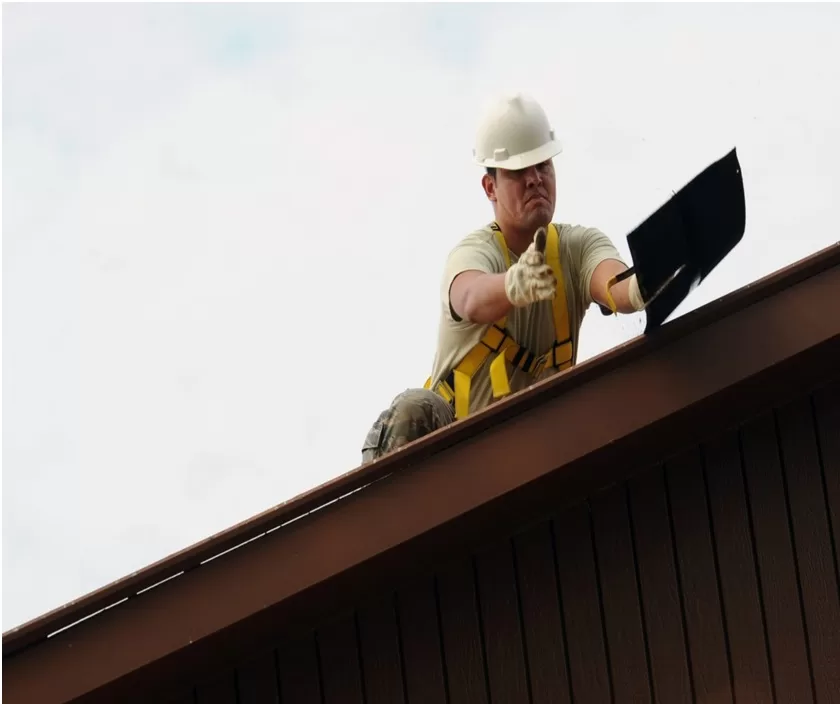Real Estate
Choosing From Top 5 Commercial Roofing Types | Pros and Cons

A roof is the head and crown of a building. It is also the first line of defense against various environmental elements. Therefore, the choice of your commercial roof must be easy on eyes and strong enough to withstand wear and tear. However, the commercial roofing space has exploded, and today we have too many roofing options to choose from.
We break down the top 5 options to help you understand which is the right choice for you.
1. TPO
Thermoplastic Polyolefin (TPO) commercial roofs have gained immense popularity and become one of the most preferred commercial roofs available today.
Making: A TPO commercial roof is a flexible, single-ply membrane that is either fully glued down or mechanically attached. It’s smooth, made of a polymer/filler blend (a rubber compound), and is usually white. TPO membranes are available in several different thicknesses.
Pro: Easy to install, non-toxic, economical, sustainable (membranes can be recycled), and long-lasting.
Con: Vulnerable to punctures and abuse from rooftop activity, susceptible to leaks, shrinks over time.
Warranty: 10 to 35 years.
2. EPDM
Ethylene Propylene Diene Terpolymer (EPDM) is a synthetic rubber that has a wide range of applications. Commercial roofs are another top application for it. They are mainly popular for their low-slope roofs and resilience.
Making: EPDM, also called ‘rubber roof,’ consists of ethylene and propylene which combine to make an extremely durable synthetic rubber membrane. The membrane is either black or white, available in different thicknesses, and comes in widths ranging from ten to 50 feet. The seams are sealed with a liquid adhesive or specialty tape.
Pro: Inexpensive to install and maintain, effective in most climates, resistant to hailstones, adaptive to structural movement, and recyclable when re-roofing.
Con: Susceptible to leaks if installed in wet conditions, adhesive weakening due to UV rays, incompatible with asphalt. Black EPDM roofs also absorb more heat.
Warranty: 10 to 30 years depending on the thickness of materials used, and the methods used for the flashing details
3. PVC
Polyvinyl chloride (PVC) commercial roofs are the original heat-welded single-ply roofing systems. This is another top choice for roofing.
Making: They’re made from two layers of PVC roof material with polyester added in between the layers to act as a reinforcement. These layers include additives to make the material flexible and UV stable.
Pro: They’re durable, flexible, and resistant. They are excellent at resisting rooftop chemicals, oils, greases, and industrial byproducts. Available in custom colors, easy-to-clean, and highly reflective.
Con: Expensive, shrinks over time, incompatible with asphalt, not as resistant to heat as some counterparts, susceptible to premature aging if used with asphalt.
Life expectancy: 5 to 30 years for high wind and hail.
4. METAL
Metal commercial roofs have been around and popular for a lot of time. They are insulating, attractive, and can be very durable.
Making: They’re made from a variety of metals, including galvanized steel (the most popular), aluminum, zinc, copper, and stainless steel, either independent or in combination. They are covered with a coating to protect against corrosion.
Pro: Lower life-cycle costs, minimal maintenance, extensive systems and finishes, environment-friendly (made from recycled materials), reduced carbon footprint, heat reflection.
Con: Susceptible to dents, may corrode when in proximity to a saltwater body, noisy during monsoons, may leak if improperly installed.
Warranty: 5 to 30 years, covers materials including panels, underlayment, and even paint finish.
5. VEGETATIVE
Vegetative commercial roofs are a modern approach that is slowly increasing in popularity. These roofs have a living vegetative (plant) layer on top of a conventional flat or sloping roof.
Making: A vegetative roofing system includes components like filters, a drainage system, and sometimes an irrigation system. Comes in a modular, pre-planted system or fixed built-in-place systems.
Pro: Boosted energy efficiency: plants keep roofs cooler in summer and warmer in winter. Improved stormwater management, membrane longevity, reduces airborne contaminants and urban heat island, adds aesthetic appeal.
Con: Expensive to install and maintain, requires advanced maintenance, difficult to detect leaks, invites troubling insects/wildlife, and is usually heavyweight.
Life expectancy: Varies greatly. Warranties typically include the cost of removing the plantings to find the source of a roof leak.
Conclusion
The right choice for your commercial roof ultimately depends on your requirements. However, no matter your decision, having commercial roofing installed by industry experts with extensive experience helps avoid any unnecessary long-term costs.




















































